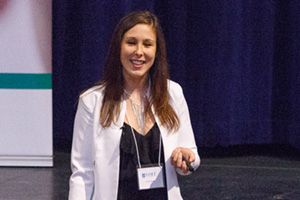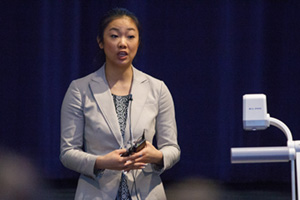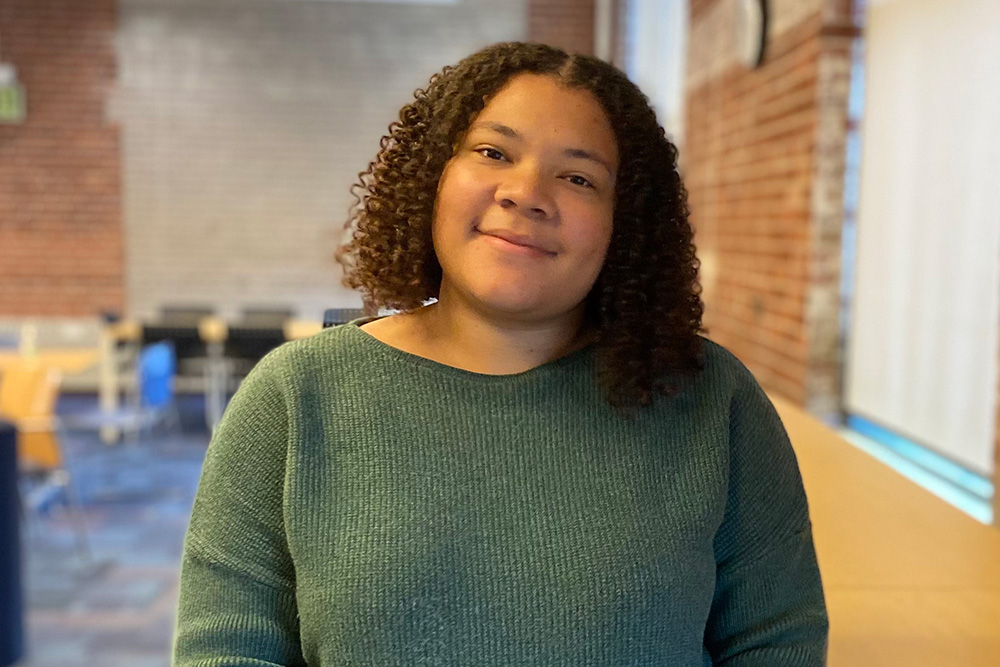UOIT Forensic Science students showcase work at prestigious conference
June 4, 2014

Two University of Ontario Institute of Technology (UOIT) students joined national and international forensics experts to showcase their thesis work at the 59th- annual Canadian Society of Forensic Science Conference, hosted by the Canadian Society of Forensic Science (CSFS) and the Standards Council of Canada (SCC).
Emily Rolko and Synthia Wou, Forensic Science students in UOIT’s Faculty of Science, (FSci), participated in the event, which took place in Gatineau, Quebec from May 5 to 9.
"It's a great honour for these students to be chosen to showcase their work and represent the University of Ontario Institute of Technology at this year's Canadian Society of Forensic Science Conference," said Dr. Douglas Holdway, Dean, Faculty of Science. "This is further proof that the Forensic Science program's recent accreditation by the American Academy of Forensic Sciences’ Forensic Education Programs Accreditation Commission is well deserved. Congratulations, Emily and Synthia, and thank you to all the faculty and students in the Forensic Science program who work so hard to prove Forensic Science at UOIT is at the top of the class."
Rolko's thesis outlined the use of an electroantennogram (EAG) to experimentally determine what chemicals released by a cadaver attract the blow fly Lucilia sericata. Since her project was technical and method-heavy, Rolko also touched on the fact that her highly specialized instrument will bridge the gap between forensic chemistry and forensic entomology (the application of the scientific study of insects to matters of law).

For her thesis, Wou deposited biological fluids such as blood, semen and saliva onto different substrates and exposed them to fire to determine whether the fluids could still be identified afterward. She also extracted and quantified the amount of amplifiable DNA on the samples to assess whether exposure to fire interfered with this process.
Wou’s research was conducted in conjunction with the Office of the Fire Marshal under the supervision of Mr. Greg Olson, and the Ontario Police College under the supervision of Mr. Rick Devine, as well as UOIT supervisors Dr. Hélène LeBlanc, Kimberly Nugent and Stacey Sainte-Marie. "Without these wonderful people providing me with the opportunity, supporting me in the lab, encouraging and supporting me throughout, my thesis would not have been possible,” said Wou.
Rolko said she would not have been successful if it wasn't for her supervisor, Dr. LeBlanc, an excellent and effective professor who mentored her throughout the thesis process. Rolko also thanked Nugent for providing guidance over the years and making sure Rolko lived up to her potential.
"I can confidently say that the program and the professors at the University of Ontario Institute of Technology have gone above and beyond in preparing me for where I am today and where I plan to go in the future," said Rolko. "The program provided me with a unique experience, combining in-class theoretical study, online research and concept application with in-field modules and mock-court sessions. As a whole, it prepared me for just about anything and I've loved every minute of it."
Rolko and Wou also presented their thesis projects during the sixth-annual Forensic Science Research Day held at UOIT’s Regent Theatre.



